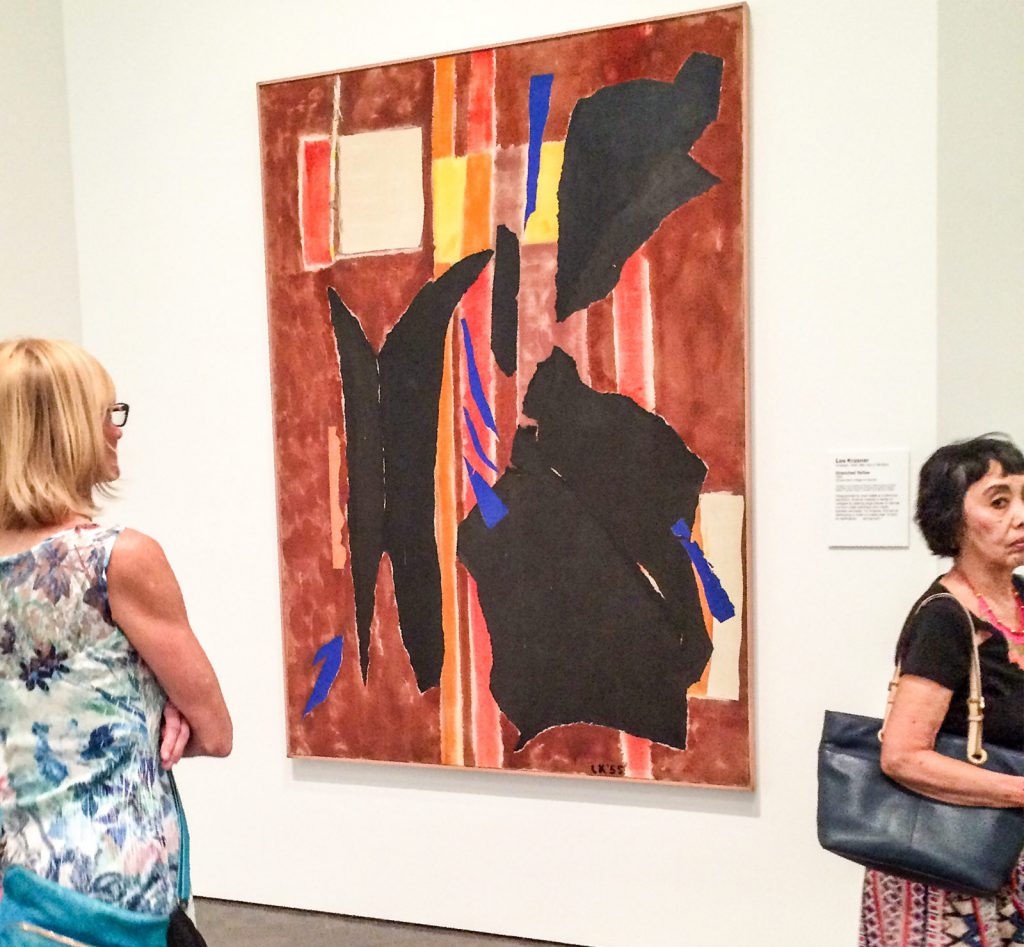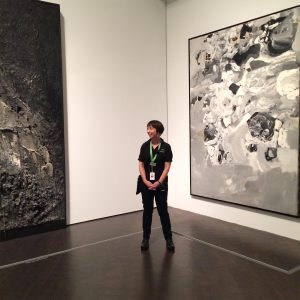June 12th through September 25, 2016
– Denver – If you watch our Intro to Women of Abstract Expressionism, you can feel the power and beauty of Abstract Expressionism. Add to this the knowledge that Abstract Expressionism was the first American movement to received international acknowledgement. Take it from me personally, when I saw a Rothko retrospective in Paris in the ’90s, I felt surrounded by room after room of emotional paintings. I was sucked by them like time warp to the early 20th Century.

I had not imagined being a woman and a painter in Rothko’s world, because I hardly knew they existed. Of the 12 artists in this show, although contemporaries of Rothko, I had only heard of Wilhem deKooning’s wife Elaine, seen a little of the work of Pollack’s wife, Lee Krasner, and one show of Joan Mitchell, recently. The only artist in this show who had seemed to be an equal in the movement is Helen Frankenthaler – Robert Motherwell’s wife. She started using raw canvas and pouring paint, a technique that would define the Color Field Movement which followed Abstract Expressionism.
Not long ago Frankenthaler was in Denver for the opening of an excellent Color Field show in the Ponti Building of the DAM. Someone told her she couldn’t take pictures, and she said ‘what if I’m Helen Frankenthaler, and that’s my work?’ The guard called someone and returned to tell her it was okay.
The curator of this show, Gwen Chanzit, was surprised to find no other shows about women in Abstract Expressionism when she started her research. After all, this is a modern movement, and hadn’t there been a woman in that very famous photograph on the cover of Life Magazine?

Abstract Expressionism got a lot of American press — somewhat because the artists demanded it. They petitioned New York art institutions to start showing American art instead of the same old European surrealism that had dominated since the ’20s. And their pleas landed them the cover of Life Magazine.
When we see this show today, it is with 50 years of pop culture and design that was derived from this very colorful, expressive movement that allowed paint to be the sole object – and it goes so well with everything. The ideas these artists invented became a formula for art education – a great way to get kids and students to learn to move and paint. Because the ideas and techniques have been repeated and re-purposed for so long, these paintings might seem old and their accomplishment easy. They are like anything that seems simple. They are easy to do, but hard to do well.
These paintings get started with some plan of action. With how to get paint on the surface, rather than how to sketch a subject. The plan is revised constantly until the artist achieves something interesting to see, or starts over. The artist’s plan plays out and you can see this visually as the individual style of each artist. The men of Abstract Expressionism starting selling paintings for a lot of money, and they got somewhat locked into their recognizable style. Rothko’s two floating rectangles on a field of another color defined his work, and if he’d started painting soup cans he would not have sold them. At the age of 69, he took his own life. Today a Rothko can go for upwards of $80 million. Joan Mitchell’s work – a highlight of this show – had, until recently, held the auction record for a woman artist at just under $12 million.
Lee Krasner, who bemoaned the fact she was more famous for being Pollock’s wife than as a painter, had a wide range of style. Apparent in the handful of images by each artist in this show, Krasner and many of these women had some freedom from fame. Ethel Schwabacher seems to start with a different plan each time, add more detail and create more intimate pieces than some of the other artists. She also had the freedom to write the biography of artist Arshile Gorky.
Frankenthaler zigzagged for a long time through the 50s as the work in this show dramatically demonstrates.
Mitchell, who died in the ’90s was a prolific artist. Her work has been resurrected in several major retrospectives since her death. Her style is very recognizable, but it is neither drip, nor pouring but one frenetic brush whose strokes feels like part of a finger painting. Her variety is emotional and driven by color. Older works just get more expressive and more pleasant to look at. There is a depth of exploration into the stroked mark on canvas that is influenced by place, and also isolation. She grew up in Chicago, then moved to France in 1958 and just kept painting.
This show reminds me of what I like about Modernism. It is completely open to the viewer. For those who want to see a face or a landscape, these paintings might not be enough information. But if you approach them without expecting to recognize the subject matter, these and most Abstract Expressionist paintings will do something different – they make you feel.
In order to feel, you need to be as open as the painting and give it some attention. A little like the Magic Eye, you need to give it some time to ‘get’ it. But they are not formulaic like the Magic Eye, but individual human expressions that should give each viewer a new view of their world. Not a personality test like the Rorschach, but an opportunity to think something new.

